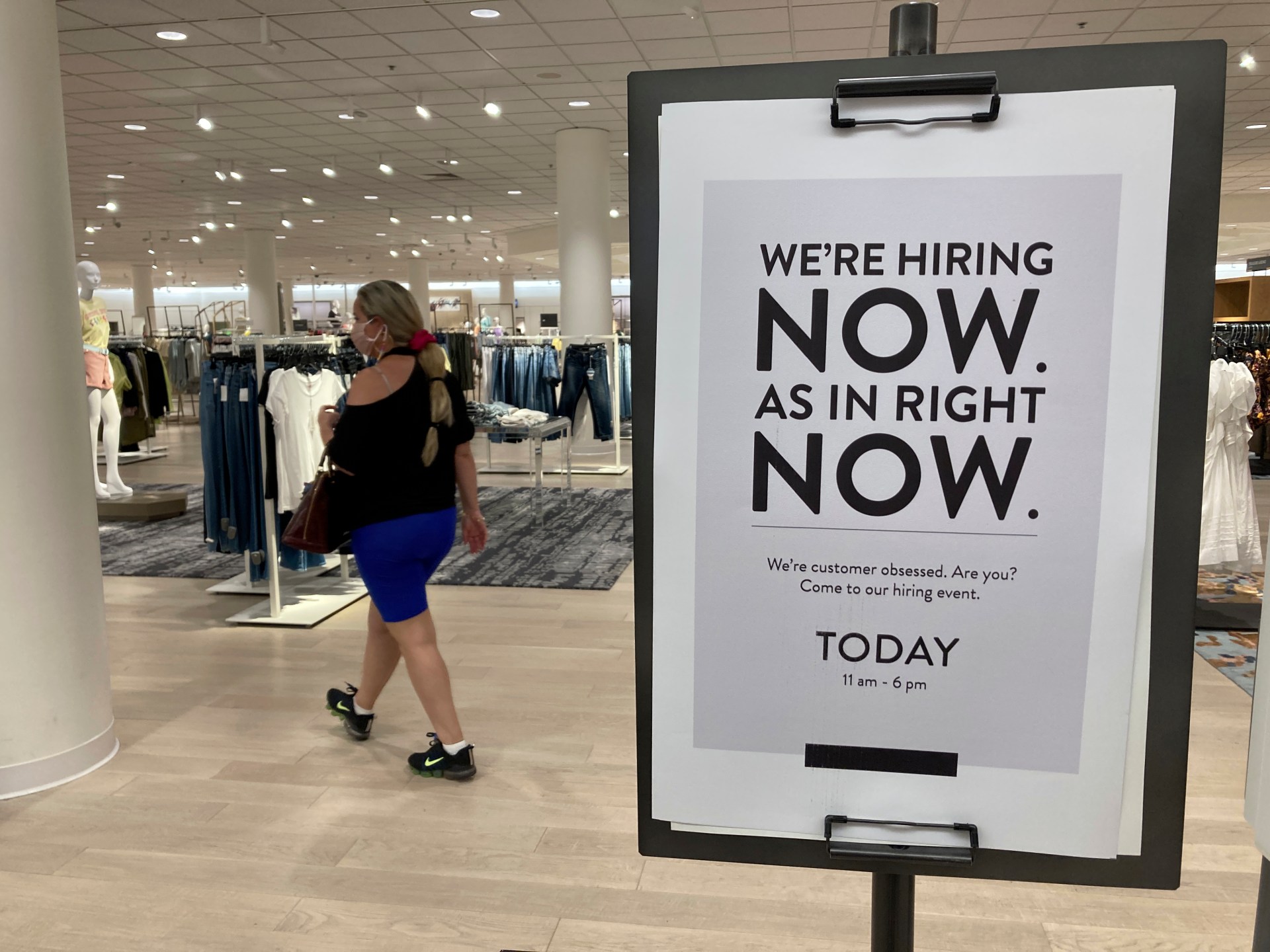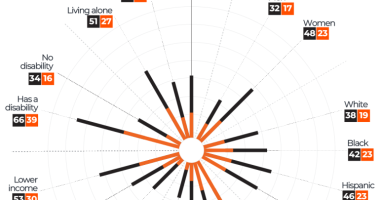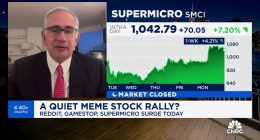
All eyes will be on Friday’s US unemployment numbers to see how many jobs were added in March and whether the unemployment rate continues to stay in its historically low range or if it is time for the alarm bells to start ringing.
Job growth in the United States has continued at a steady clip in the months since the early days of the COVID-19 pandemic, when businesses came to a sudden stop.
“In the aftermath of the pandemic as things started to pick back up, there was a real struggle to find people to work and companies had to raise how much you paid to get people,” said Matt Colyar, an economist at Moody’s Analytics.
There are a number of factors behind that, including restrictions on the number of foreigners entering the country during the COVID-19 pandemic and baby boomers dropping out of the workforce for fear of the pandemic, creating nearly a shortage of some two million workers aged 55 and older.
As business ground to a halt as a result of the pandemic, nearly 22 million jobs were lost. A lot of the hiring since then has been about refilling those roles, said Dan North, senior economist at Allianz Trade, adding: “It’s not like those jobs went away.”
Since the start of the pandemic, the US economy has lost 21,888,000 jobs and has added 27,387,000, according to Allianz Trade data. “You could argue that the economy has created only 5,499,000 new jobs,” said North.
But jobs are being created, nonetheless. While employment fell by 243,000 jobs in December 2020, following seven consecutive months of increases, the labour market has consistently added jobs each month since then, taking the US economy on a 38-month streak of monthly job gains.
If payroll employment is shown to have risen in March in Friday’s monthly jobs report, which is released at 8:30am local (12:30 GMT), then it will be a 39-month streak.
Healthcare and state sector driving jobs
While jobs in the leisure and hospitality sectors are still catching up to pre-pandemic levels, two sectors that are driving job growth are healthcare and state and local government, experts said.
“Healthcare in the US has always been under-supplied in terms of labour so a strong growth in that sector is a good thing,” said Bernard Yaros, lead US economist at Oxford Economics. “Our hospitals and health clinics should be fully staffed, especially given an ageing population.”
Hiring for government jobs is still focused on filling jobs that were lost during the pandemic, said Yaros. That sector was a late starter because of the government’s inability to match private sector salaries in order to attract talent, he said. But now that hiring is slowing down in the private sector, jobs in the state sector have seen solid growth, he added.
A lot of the hiring is also being driven by a rebound in immigration since 2023 – both legal and undocumented – that has allowed the economy to continue adding more than 200,000 jobs a month, said Yaros.
“When there’s an increase in labour supply through immigration, it allows for strong growth. But that doesn’t lead to inflation because you have more people looking for work so employers don’t have to raise wages [as much] to attract workers”, Yaros said.
However, hiring in most other sectors remains volatile and mixed, he added.
‘Starting to see some disruption’
“Underneath the shiny headlines, we are starting to see some disruption,” said North.
On Tuesday, the Job Openings and Labor Turnover Survey, or JOLTS report, from the US Department of Labor showed there were 1.36 vacancies for every unemployed person in February, down from 1.43 in January. The decline indicates a rise in unemployment.
According to the data, layoffs reached 1.7 million in February, up from 1.6 million in January. Job openings are down 11 percent year-on-year and job quits – the number of workers resigning from their jobs, likely for better opportunities, said North – have returned to pre-COVID levels, indicating that wage increases will not be as fast-paced or high as they have been.
Unemployment numbers, while still at historic lows, are slowly starting to creep up, hitting 3.9 percent last month, up from 3.7 percent for each of the three months prior.
While the unemployment rate has been below 4 percent for just over two years in a row – the longest such stretch since the late 1960s – the mood is starting to change. In a March consumer confidence survey by The Conference Board, consumers said that jobs are harder to get and that they expect their incomes to decrease over the next six months.
The question now is if, or when, unemployment numbers will break through 4 percent.
“If it goes up to 4.1 percent next month, everyone will start talking about the Sahm rule,” said North, referring to former Federal Reserve economist Claudia Sahm, who invented a measure that examines how fast the unemployment rate is rising to determine if it is an indication of a recession.
While most economists agree that the chances of the US economy slipping into a recession have receded, a rise in the unemployment rate will slow down economic growth.
All of this feeds into decisions that the Fed will have to take on whether to cut interest rates, and how quickly. The benchmark overnight interest rate is in the 5.25 percent to 5.5 percent range, where it has been since July to curb a 40-year high inflation spike. While inflation has come down since then and is hovering around 3.2 percent as of the end of February, the latest data available, that’s still higher than the Fed target of 2 percent.
In such a scenario, a robust job market – and a healthy spending ability alongside – will have the Fed looking for signs of a rise in inflation, delaying interest cuts.
But a slowdown in hiring – and a rise in unemployment, ultimately – could bring the prospect of interest rate cuts. The data on Friday will offer some clues.
Read More: World News | Entertainment News | Celeb News
Aljazera










